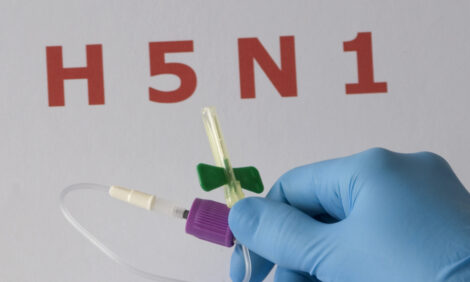



Secrets of high productivity at low carbon cost
A beacon of lean production and efficiency, Conor Colgan of Aidansfield Research Farm, is using lean management principles and accuracy driven measurement to maximise output and reduce carbon footprint.“It’s a family business, we’ve been farming since 1969,” explains Conor Colgan, whose father, Aidan Colgan, started out as a first generation farmer, with about an acre of land in Northern Ireland.
Before moving to Northumberland, Conor explains: “My father grew the business and helped develop the first ever Farm Quality Assurance Scheme in the North of Ireland. He always had a great business acumen. At our peak we had 300 suckler cows on about 500 acres of hill and grassland and 400 acres of arable land all rented on an annual lease.”
In 2002 the family uprooted and purchased Lowick Hall Farm in Northumberland, where Conor and his mother, Joan, run Aidansfield today.
Over the last two decades, Aidansfield has grown into a mix of enterprises, with 630 acres of crops and 170 acres of grazing land that can sustain up to 150 suckler cows. Conor operates a stocking rate of 1.25 acres of grassland (silage and grazing) per cow and calf, that he hopes to soon get down to one acre, to generate £1,000 per acre of cattle sales off grassland.
“This is a very productive vein of land for cereal crops producing between four to five tons of wheat per acre – so the cows have to compete with that for profitability.”
Making the most of the land
“We’ve added 3,000 tons of grain drying/storage and state-of-the-art housing for 150 cows – up from 60,” explains Conor.
The new livestock complex supports a GrowSafe system that monitors the animals’ dry matter feed intake, and real time weight gain measurement through which Conor has been able to selectively breed for feed efficiency, achieving higher stocking rates.
"We can selectively breed for a 20-30% increase in feed efficiency."
“Through our system,” he says, “we can selectively breed for a 20-30% increase in feed efficiency, upping the amount of cattle we hold on the same resources.”
Maximising the benefits of technology, the facilities include a self-locking in-pen system, to streamline pregnancy testing and vaccination processes, and a bespoke external handling system that weighs the young animals.
“I can weigh 15 bulls in under 20 minutes which minimises time out of penning, resulting in effectively no reduction in feed intake,” says Conor.
It’s through gains in efficiency like this that Conor is continuously striving for higher productivity with a lower carbon footprint per unit of production.
By mapping value streams [see key terms section] and keeping a close eye on capacity and timings, Conor has extended his lean operation ideas to grain storage, eliminating bottlenecks and reducing labour costs.
"We’ve optimised the land use and completely displaced grain storage costs off of the farm."
Through an investment in its grain storage facility, the farm is now beating local grain silos and the local grain co-op when initial capital costs are depreciated over a 25-year period.
“We’ve optimised the land use and completely displaced grain storage costs off of the farm.”
Maximising productivity
As well as breeding his Pedigree Saler cows for a healthier and more productive herd, Conor switched from selling heifers for beef to selling them for breeding – reducing the cycle time by five months. This change in selling policy helped the farm to double stocking, reducing the carbon footprint for each animal.
“It comes down to the price of the product, whether that’s the finished animal or a tonne of wheat, verses the amount of time that it stays on the property and the work required to build a reputation for quality,” he explains.
Reducing the carbon footprint
Reducing the time heifers are on the land, has helped to reduce carbon emissions from 34 kilos of CO2 per unit of production in 2009 to 17 kilos of CO2 today. Aidansfield is already beating the Quality Meat Scotland (QMS) average, while still looking to improve.
“We’re also looking into further automation, producing our own protein, and the implementation of research that could allow us to measure carbon absorption in our crops, hedges and grassland,” says Conor.
He believes that through measurement of carbon sink within the production process, he can find a balance between meeting government targets, that usually focus on dedicating land to nature, and efficient food production. This could include measuring the carbon absorption of crops and the carbon retention in soil.
Careful monitoring
“We’ve optimised the mix of enterprises on the farm to maximise sales value, that’s the first step,” he explains, “the more difficult step is delivering all that at an optimal level of cost.”
Conor’s lean approach looks to balance overheads with potential gain. For example, ploughing and traditional seedbed preparation present significant costs, but Conor believes they’re essential in maintaining his reputation for high quality, specialising in the production of wheat and oat seed. A high-quality seed bed also has the added benefit of saving on slug pellets and herbicides.
“It comes down to your attitude to risk, how much insurance you want. If you have discerning customers, you really have to be sure you’re producing that consistently high-quality product.”
Measuring success
Aidansfield’s high tech capability has allowed Conor to conduct trial work for a large international firm and collaborate on research projects with The Institute of Global Food Security at Queen’s University, Belfast, through which he’s able to partner and apply for research funding.
The farm now monitors animals through automated feed systems, smart tags for dry matter intake, cameras, and scales at drinking troughs.
“The next stage of research,” he says, “will be to take this technology out to grass and get the whole production cycle monitored in real time.”
"We’re more accuracy driven, than ‘intensive’. We’re using data to increase efficiency."
To make the investment worthwhile for other farmers, the value of monitoring needs to exceed the cost of technology. The research conducted at Aidansfield aims to pinpoint those aspects that are worth the cost.
Animal Welfare
High output operations often get labelled ‘intensive’ – which tends to bring up questions of animal welfare in the public mind. Conor states, “We’re more accuracy driven, than ‘intensive’. We’re using data to increase efficiency and, with everything being measured, animal welfare is significantly improved.”
The animal housing provides 10 metres squared per cow, exceeding recommended space, and is designed to provide excellent airflow, while continuous monitoring keeps animals healthy.
“Our animals are monitored year round, we produce plenty of grass, and our system ensures they stay healthy and, due to Net Feed Efficiency measuring, are never underfed,” says Conor, “furthermore our herd is health scheme accredited which is reflected in the fact that we’ve only used one bottle of antibiotics in the last year.”
The future
The business benchmarks with other farms to compare overheads and variable costs and map value streams. Conor believes that further improvements can still be made.
“There is a need, going forward,” muses Conor “to be even more aware of how easily things can slip.”
The farm is also looking at a reduction in labour through further automation and a decrease in nitrogen use in crops and grass through better soil monitoring, use of legumes, new grass varieties and trialling of bio-stimulants.
The question is, can these lean management principles and high-tech measurement systems be employed on a wider scale? With Aidansfield’s continued research, we may see more farmers considering a lean management approach, with the potential to dramatically increase efficiency and reduce the carbon cost of agriculture and meat production across the country.


